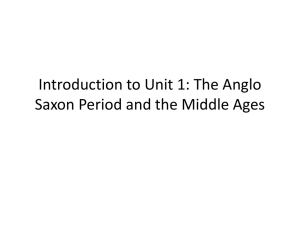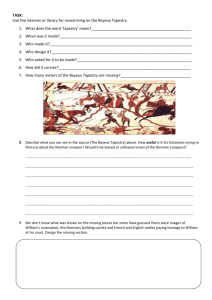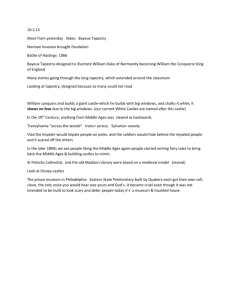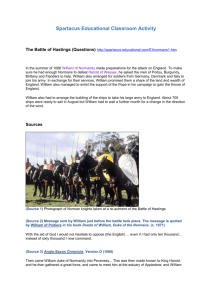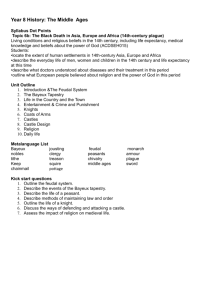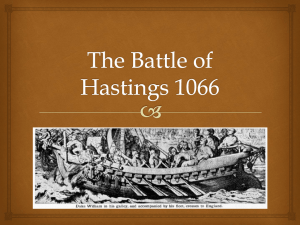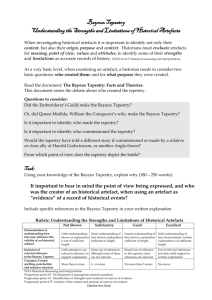POWERPOINT+norman+conquest
advertisement
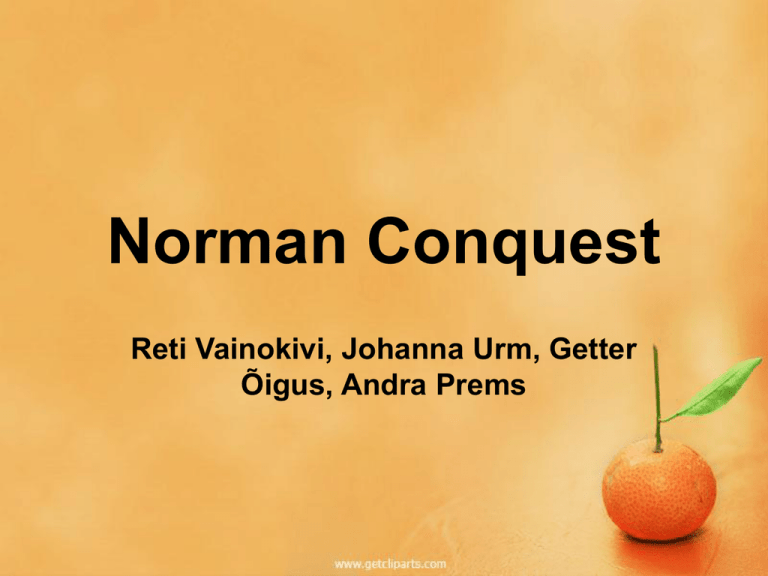
Norman Conquest Reti Vainokivi, Johanna Urm, Getter Õigus, Andra Prems King Harold Godwin • Was the last Anglo-Saxon king before the Norman Conquest • His reign lasted less than a year • His father, Godwin, was a powerful Earl of Wessex • He was arguably the most powerful man in England at his time • After Edward’s death, he claimed that he should get the throne • Won Harald Hardraada at the battle • Is one of the two monarchs in British history, who died in a battle • He was defeated at the Battle of Hastings by William the Conqueror Harald Hardraada • He was the king of Norway from 1047 until 1066 • He was also claimed to be the King of Denmark • Among English people, he is recognized for his invasion of England • He won a great victory against the first English forces he met • His forces were cut through easily • Harald died fighting at the final battle against Harold’s forces William I • The King of England from 1066 to his death in 1087 • In 1032 became William of Normandy • He had altogether nine children • In 1066 was crowned as the King of England in Westminster Abbey • In 1086 he ordered the Domesday Book • On 9 September 1087 he died William II • The third son of William I amd the King of England from 1087 until 1100 • Got his nicknam William Rufus due to his red-faced appearance • Was a very ruthless ruler • He had no children • Had troubles with the church • Died on 2 August 1100 because he was shot The Battle of Hastings • • • • • Took place in 1066, at Seniac Hill Two sides were the Normans and the English Around 8000 men died Harold was killed The Normans won and William was crowned the King of England The Bayeux Tapestry • The Bayeux Tapestry is a 50 cm by 70 m long embroidered cloth – not an actual tapestry • It explains the events leading up to the 1066 Norman invasion of England as well as the invasion itself • It was made by the noble Saxon women • The main colors are terracotta or russet, blue-green, dull gold, olive green and blue The Bayeux Tapestry • People that appear in the Tapestry: Edward the Confessor, Harold, William the Conqueror, Bishop Odo • There are two problable places where it was made: in Winchester or in Canterbury • It is an important historical source • It is presently put on public view in a special musem in Bayeux, Normandy, France The Tower of London • Situated in central London, on the north bank of the river Thames • Consists of several buildings • The oldest building – the White Tower • Covers an area of 18 acres The White Tower • • • • • • The oldest building in the Tower Was built in 1078 by William I Originally referred to as the Great Tower 27 m high Primary purpose – a fortress-stronghold Nowadays - a museum Durham Cathedral • • • • • • • • Situated in the city of Durham, England Norman (Romanesque) architecture Begun in 1093 The turning point for the cathedral was after the Reformation in the 16th century Re-founded in 1540 On the bank of River Wear 143 m high A UNESCO World Heritage Site THANK YOU FOR YOUR ATTENTION!
